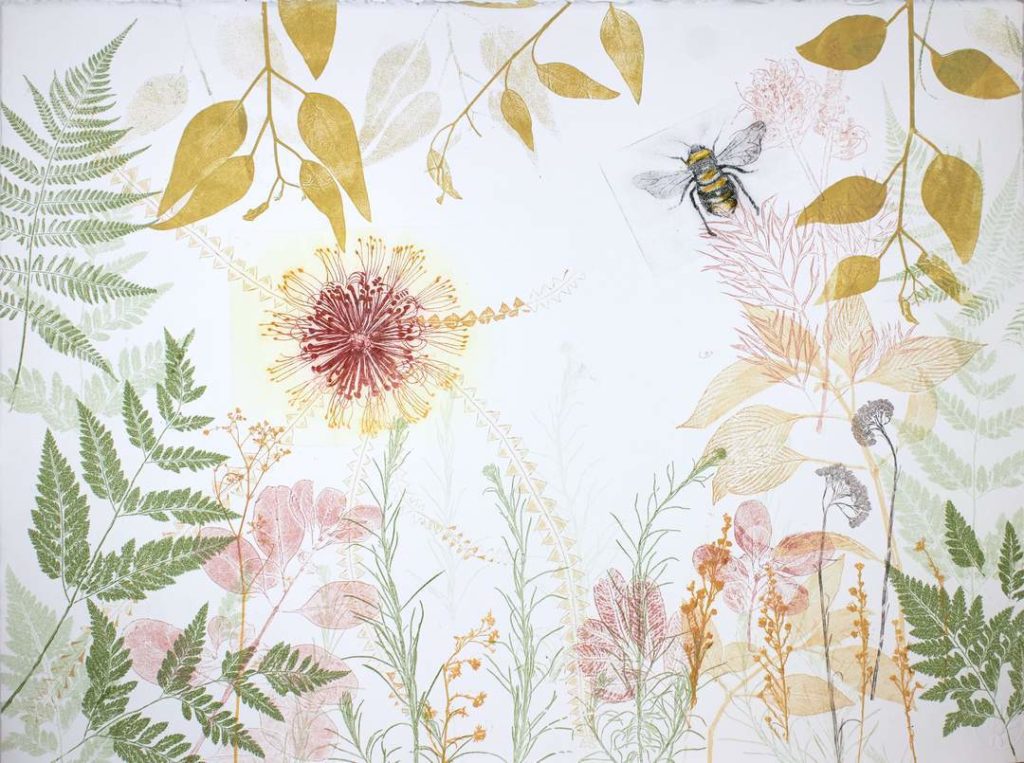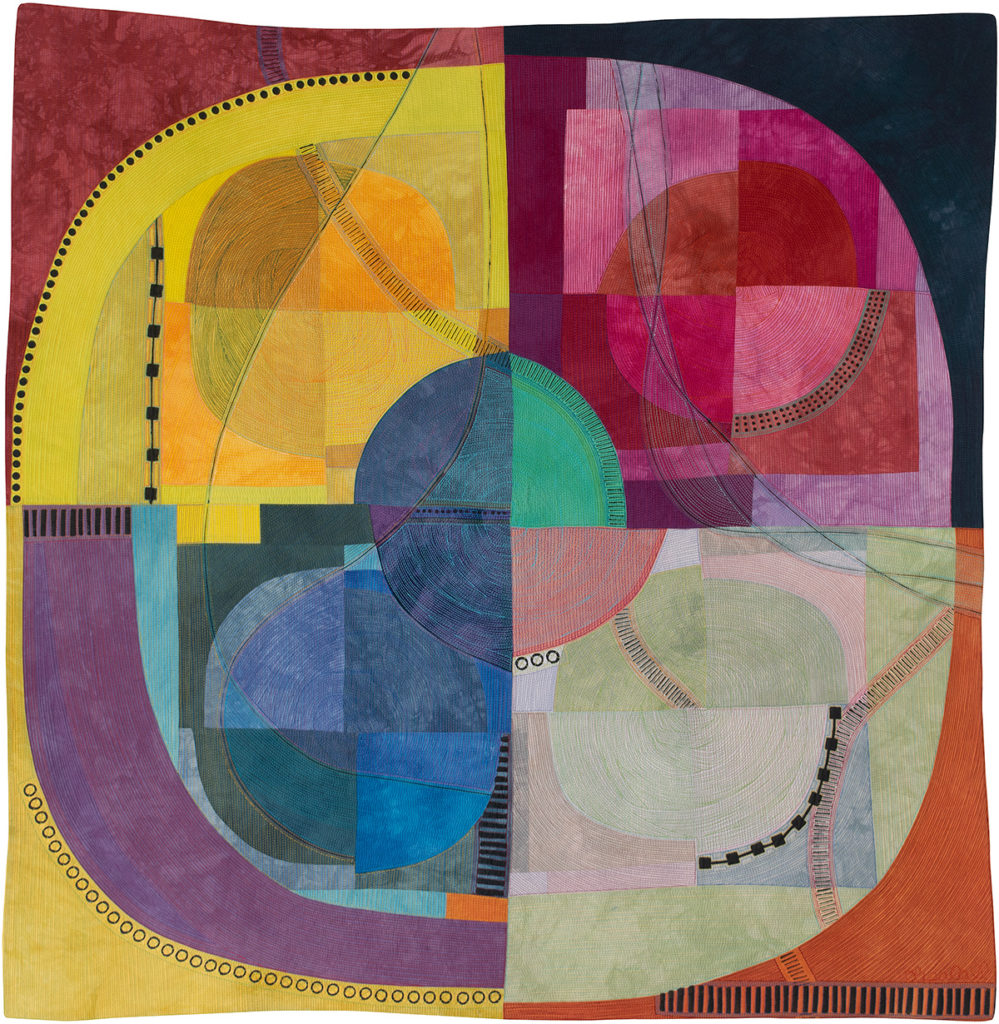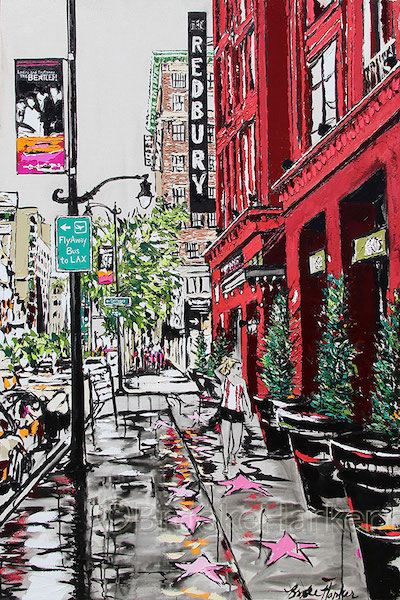Do I Need an Art Style to Be Successful
In guild to projection a professional person image as an creative person, you must exist able to distinguish yourself and your art from a ocean of other talented artists. To do this, y'all must first develop your creative style.
As most artists have come to larn, developing an artistic style all your own is easier than information technology sounds. It means that your work doesn't wait like your instructor'due south work, but that it is also cohesive when shown together.

What is Artistic Fashion?
Fashion is a word we employ freely and without much thought. Merely what does information technology hateful?
In her book Living With Fine art, Rita Gilbert writes that "style is a characteristic or grouping of characteristics that we can identify as constant, recurring, or coherent." She goes on to say, "Artistic style is the sum of abiding, recurring or coherent traits identified with a certain individual or group."
An artist'southward fashion is not good or bad. It just IS. The execution might exist criticized, the colors might be perceived every bit ugly, or the composition seen as weak, but the style is what it is.
Your mode is a combination of the mediums, technique, and bailiwick matter you lot choose. Information technology's non just that you make gimmicky quilts or that you paint landscapes. Those are mediums and genres by themselves. No, style is that extra little matter you exercise to distinguish your work from that of other artists.

Two quilt artists might each create abstruse, colorful compositions using the same traditional cake. If both are mature artists, however, we'd probably be able to tell i artist's work from the other. For case, a fiber artist might employ one or more than of the following in creating the quilt.
- Hand-dyed fabrics from organic dyes
- Loose threads hanging on the surface (rather than hiding them)
- A particular fabric that becomes a signature of sorts
- Text written with ink on top of the quilt
In other words, she becomes known for works that incorporate a certain characteristic. For a painter information technology might be loose brushstrokes, impasto, or a repeated image. Kehinde Wiley, who painted the official portrait of President Obama, is known for his highly decorative backgrounds around his subjects. Sarah Sze brings together hundreds and thousands of found objects to create detailed multimedia landscape installations.
What are you known for?

Multiple Artistic Styles
Yous can piece of work in as many styles equally you desire, merely separate bodies of piece of work might hateful separate audiences. It might also hateful that if you have ii very different bodies of work you will do twice the work marketing it. Iii different styles might hateful exerting three times the marketing effort.
3 different styles of art = [possibly] 3 unlike audiences = 3 times the marketing attempt
[The Successful Artist'south Guide to Writing Your Artist Statement ]
Some artists choose to have a very narrowly divers manner and seem to produce most the aforementioned artwork over and once again with differences in color or scale. Adolph Gottlieb, for instance, painted his trademark Bursts over and over once again. Some were ameliorate than others, but they all have the aforementioned basic elements.
His close friend, Mark Rothko, became known for large bands of thin pigment floating on the canvas surface. The colors differ, simply nosotros know a Rothko when nosotros see information technology.
Style v. Field of study Matter five. Medium
Style shouldn't be confused with subject matter or medium.
You don't have to stick to one image equally Gottlieb and Rothko did in their maturity. You don't even have to stay true to a unmarried medium.

Developing a recognizable artistic style doesn't hateful you must produce the aforementioned work over and over once again. Information technology simply means that you have created work that others identify with you lot.
There isn't a college compliment you tin receive than for someone to exclaim, Hey! That looks similar a Linda Hugues painting! from across the room. (Unless, of form, your proper name isn't Linda Hugues.)
Your style isn't birthed at the offset of your studio practise. You won't discover it past wishing for it or thinking near it. You tin but develop your artistic style through difficult work in the studio and an intense dedication to your arts and crafts.
You must make a lot of fine art. A. Lot. Then brand more.
I can tell an artist isn't gear up for an art business when their work looks like a mishmash of styles, maybe reminiscent of their instructor's art.
If yous're struggling with figuring out who you are equally an artist and where your work is going, consider these seven steps to developing your artistic mode.
1. Be devoted to your studio exercise.

I said this already, only it has to go at the top of the list.
This is the most important thing you tin can do to become a professional artist. If y'all tin can't devote non-negotiable studio time, you aren't going to get very far. Yous demand to brand art. You need to make more art!
Without the art, yous are not an creative person.
Without the art, you have no art business.
Most artists who take other jobs to pay the bills will find this difficult to manage, merely the delivery is disquisitional. Everyone gives up something to pursue their dreams.
If it is a struggle to honor your delivery, block out time on your calendar (in ink!) for the week. Treat information technology equally whatsoever other appointment and respect this promise to yourself. Say No to those who request your attention during this fourth dimension.
It'southward the first step toward professionalism.
two. Describe. Putter. Write.
Wherever you lot go, whatever you are doing, get into the habit. Sketch a scene, write downwardly your responses to other artists. The goal is to keep your pencil on the newspaper and to capture your brilliance before it disappears.
Many artists proceeds insight into their fine art by blogging. I hear over and over again from artists that the about important reason to keep a blog is for self-discovery.
If yous don't envision keeping up with a weblog, at least learn to be articulate well-nigh the work. I can aid you observe the words in my Magnetic You class.
three. Wait at art.
Await at lots of art! Some people are afraid of copying other artists. Don't be. How practise you think the Old Masters learned?
If you practice enough looking and copying, you'll work through the influences and observe your own voice.

Only at that place is a caveat here. NEVER try to sell art that was copied from some other artist or relies too heavily on the piece of work of your teacher. This is inappropriate. You lot're learning. One time y'all have found your way, you tin consider turning your art into a business.
If you missed out on fine art history classes, consider taking a few at your community higher or college educational activity facility. You can as well cheque out films well-nigh fine art and art history at your local library or through Netflix.
Cheque out my updated list of art documentaries.
4. Let yourself to experiment in the studio.
Take classes to acquire skills with new mediums and techniques, or to acquire from a new teacher.
You don't have to make art to sell. You can, and should, make art to grow as an creative person.
Endeavour a new medium, practise a new style, copy a favorite historical piece of work, enlarge or subtract the size, or employ a color exterior of your normal palette range. You are making fine art just for you lot. No one else has to run across it.
5. Stride away from the art.
Information technology's hard to evaluate progress while you're in the throes of production.
Know when it'southward time to accept a step back, get away and return with fresh eyes.

6. Evaluate the piece of work to this point.
Later you have taken a break, look at your piece of work critically to effigy out your strengths and weaknesses.
What do yous like? Not like?
What can you suit? Add? Decrease?
Does it convey the bulletin you desire to get across?
Ask a variety of other people (friends, family, strangers, other artists, not-artists, etc.) the aforementioned questions. This conversational exercise is a procedure I walk y'all through in Magnetic You.
seven. Repeat.
Developing your creative fashion and making good art is the result of existence utterly devoted to your craft.
Continue doing all of the above. Once more. Once more.
This post was originally published on March 23, 2010 and has been updated with original comments intact.

Source: https://artbizsuccess.com/findstyle/